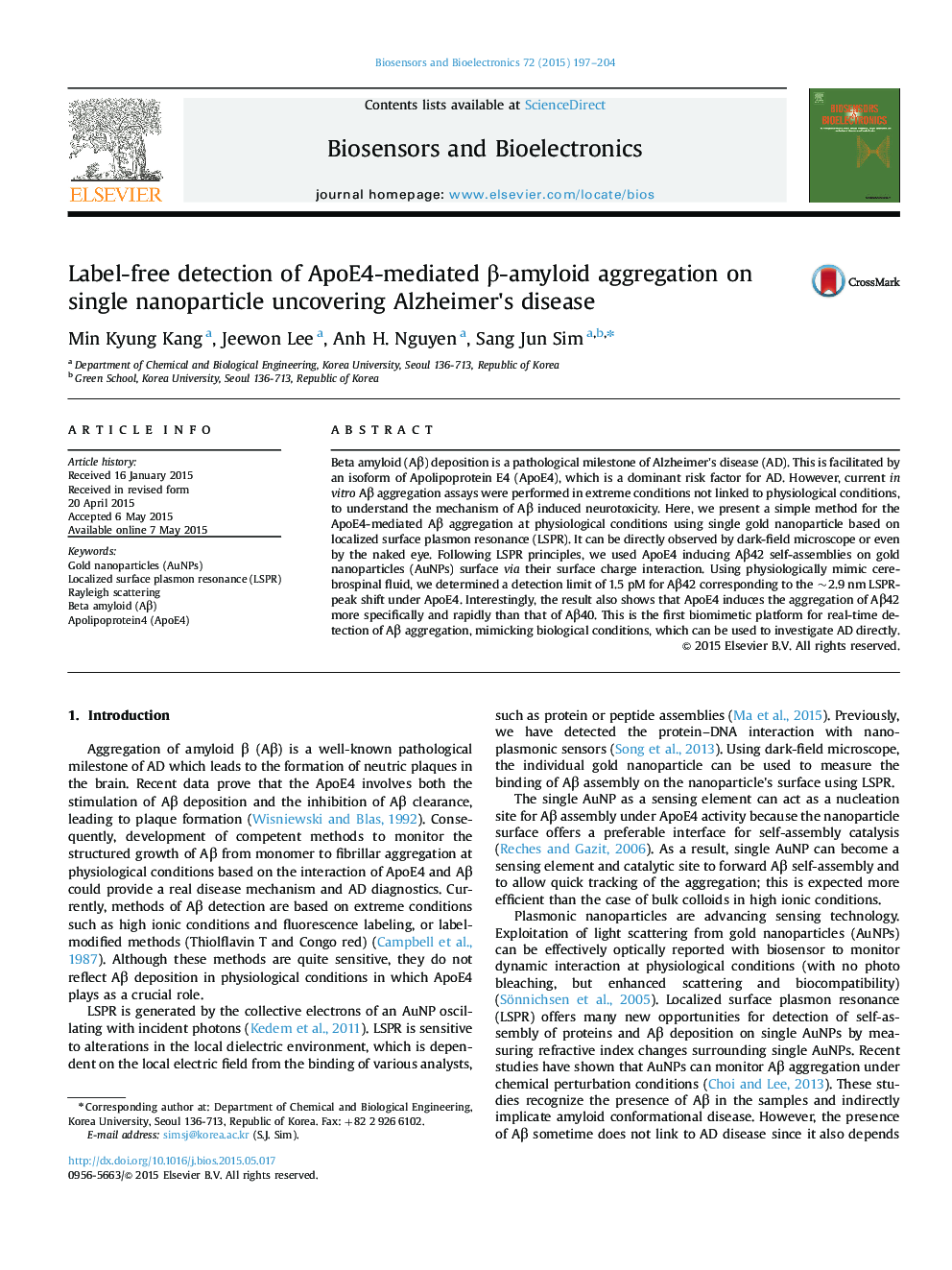| Article ID | Journal | Published Year | Pages | File Type |
|---|---|---|---|---|
| 866313 | Biosensors and Bioelectronics | 2015 | 8 Pages |
•Biomimetic platform for study of β-amyloid aggregation.•ApoE4-mediated β-amyloid aggregation.•Kinetics of β-amyloid aggregation on the single nanoparticle sensor.•ApoE4 activity for Aβ40 to Aβ42 ratio in β-amyloid aggregation.
Beta amyloid (Aβ) deposition is a pathological milestone of Alzheimer's disease (AD). This is facilitated by an isoform of Apolipoprotein E4 (ApoE4), which is a dominant risk factor for AD. However, current in vitro Aβ aggregation assays were performed in extreme conditions not linked to physiological conditions, to understand the mechanism of Aβ induced neurotoxicity. Here, we present a simple method for the ApoE4-mediated Aβ aggregation at physiological conditions using single gold nanoparticle based on localized surface plasmon resonance (LSPR). It can be directly observed by dark-field microscope or even by the naked eye. Following LSPR principles, we used ApoE4 inducing Aβ42 self-assemblies on gold nanoparticles (AuNPs) surface via their surface charge interaction. Using physiologically mimic cerebrospinal fluid, we determined a detection limit of 1.5 pM for Aβ42 corresponding to the ~2.9 nm LSPR-peak shift under ApoE4. Interestingly, the result also shows that ApoE4 induces the aggregation of Aβ42 more specifically and rapidly than that of Aβ40. This is the first biomimetic platform for real-time detection of Aβ aggregation, mimicking biological conditions, which can be used to investigate AD directly.
